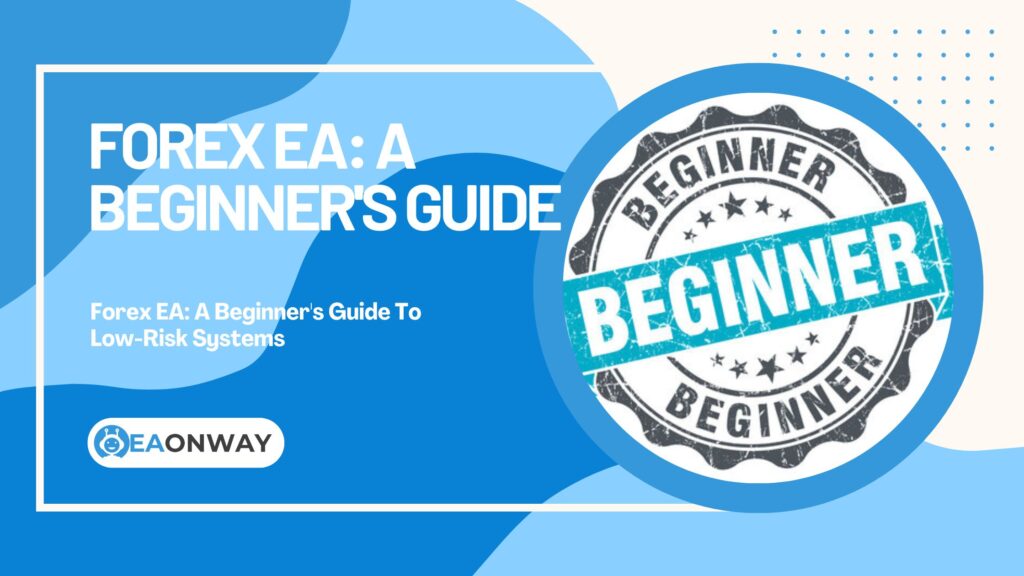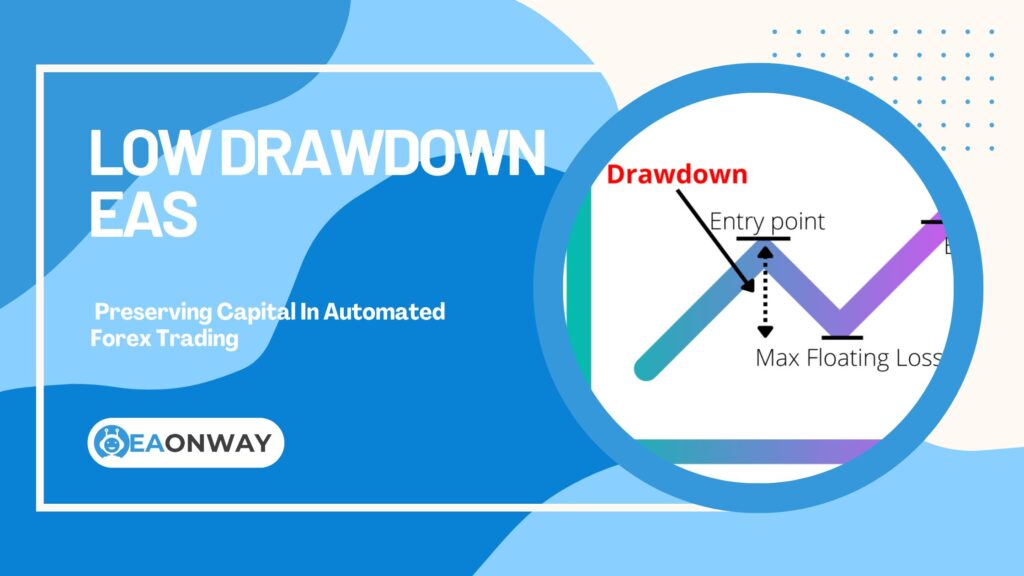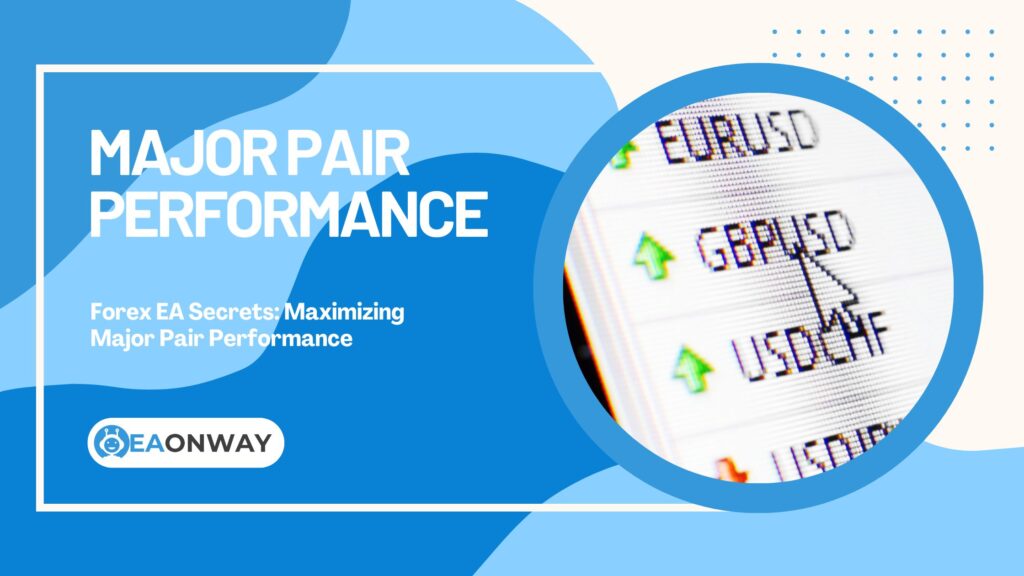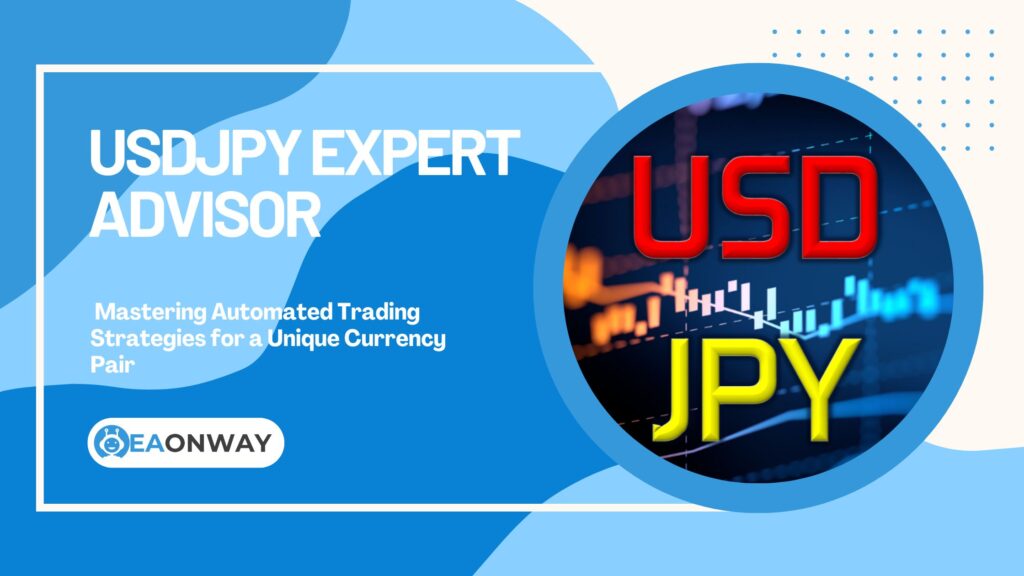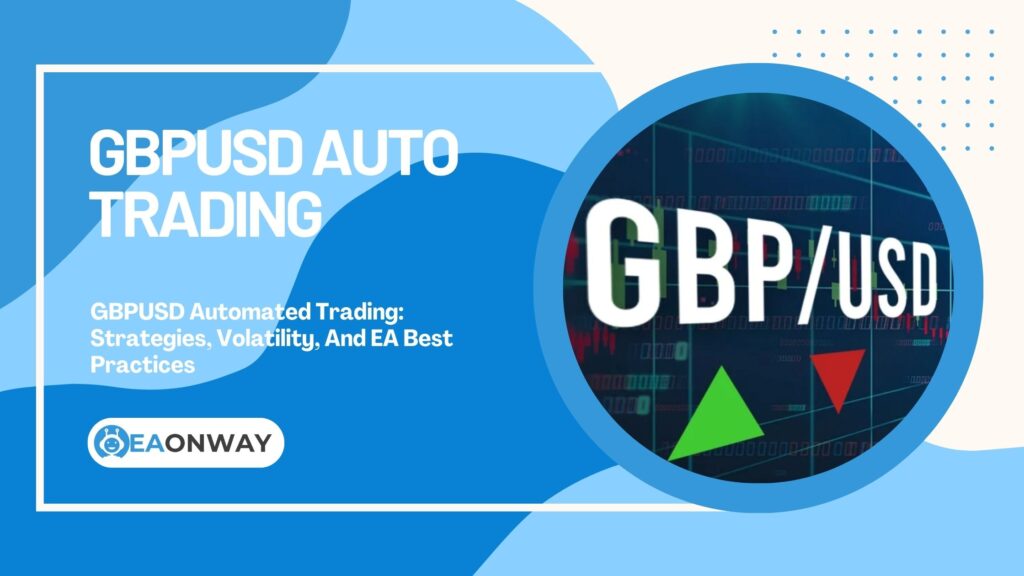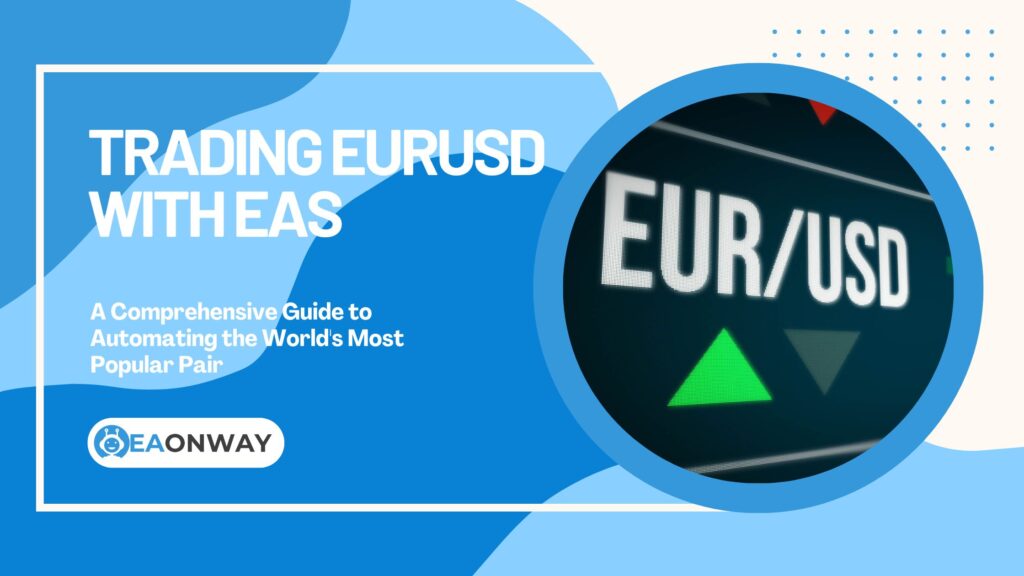Common EA Trading Strategies
AI Trading EAs: Revolutionizing Forex Automation with Intelligence
AI Trading EAs: Revolutionizing Forex Automation with Intelligence
The relentless march of technology is reshaping industries worldwide, and the foreign exchange (Forex) market is no exception. For traders seeking an edge, AI Trading EAs (Expert Advisors) powered by artificial intelligence and machine learning are emerging as a significant force, promising to revolutionize Forex automation. But what does this mean for the average trader, and how can one navigate this complex yet fascinating landscape? Are these intelligent systems the key to unlocking new trading potentials, or do they carry hidden pitfalls?
This article delves into the world of AI Trading EAs, designed for individuals eager to understand this evolving technology. We aim to provide in-depth knowledge about how artificial intelligence Forex systems function, explore the intricate workings of machine learning trading algorithms, and objectively assess both the potential benefits and, crucially, the inherent risks. Our goal is to equip you with a clear understanding, helping you grasp the nuances of AI in Forex automation and foster realistic expectations, steering clear of hype and focusing on informed decision-making.
Key Insights on AI Trading EAs
Before we dive deeper, here’s a quick summary of what you need to know about AI Trading EAs and their impact on Forex automation:
- Sophisticated Automation: AI Trading EAs are advanced software that use artificial intelligence and machine learning to make and execute Forex trading decisions, aiming for more adaptability than traditional EAs.
- Learning and Adapting: Unlike rule-based EAs, AI-driven EAs can learn from historical and real-time market data, theoretically adapting their strategies to changing market conditions.
- Data-Intensive: Their effectiveness heavily relies on vast amounts of high-quality data for training and operation. Concepts like neural networks and deep learning are central to their ability to identify complex patterns.
- Potential Benefits: These include enhanced data analysis, potential for strategy adaptation, 24/7 operation, and the removal of emotional trading biases.
- Significant Risks: Key risks involve the “black box” nature of some AI models, the danger of overfitting to past data, dependency on data quality, the need for ongoing monitoring (they are not “set and forget”), and susceptibility to misleading marketing.
- Not a Magic Bullet: AI Trading EAs are tools, not guaranteed profit generators. Success requires understanding, due diligence, and robust risk management.
- Evolving Field: The technology is continually advancing, promising more sophisticated AI trading algorithms and integration with diverse data sources in the future.
Understanding AI Trading EAs: The Next Frontier in Forex Automation
The concept of automated trading isn’t new to Forex, but the integration of true artificial intelligence marks a significant evolutionary step. Let’s break down what these advanced systems entail.
What Exactly Are AI Trading EAs?
AI Trading EAs are sophisticated Forex Expert Advisors that leverage artificial intelligence (AI) and machine learning (ML) algorithms to analyze market data, identify potential trading opportunities, and execute trades automatically. Unlike traditional EAs that strictly follow pre-programmed rules, AI Trading EAs are designed to learn from data, recognize complex patterns, and potentially adapt their trading strategies over time without explicit reprogramming for every new market nuance. Their core function is to bring a higher level of intelligence and adaptability to automated Forex trading systems. These intelligent Forex robots aim to make more nuanced decisions than their predecessors.
How Does Artificial Intelligence Power These Forex Robots?
Artificial intelligence enables these Forex robots to analyze vast and complex datasets far beyond human capacity in real-time, identifying subtle patterns and correlations that might indicate future price movements. Core AI concepts at play include machine learning, neural networks, natural language processing (for sentiment analysis from news, for example), and predictive analytics. The AI component essentially tries to mimic cognitive functions like learning and problem-solving to make informed trading decisions. The quality and quantity of data fed into these AI trading algorithms are paramount for their performance; the more relevant and clean the data, the better the AI’s potential to discern meaningful insights.
What is Machine Learning’s Role in Developing Smarter EAs?
Machine learning, a subset of AI, is the engine that allows AI Trading EAs to learn from historical data and improve their performance over time without being explicitly programmed for every scenario.
There are several types of machine learning relevant to Forex EAs:
- Supervised Learning: The AI is trained on labeled historical data (e.g., past price movements tagged with whether they led to profitable trades). It learns to map inputs to outputs.
- Unsupervised Learning: The AI is given unlabeled data and tries to find hidden patterns or structures on its own, such as clustering currency pairs with similar behaviors.
- Reinforcement Learning: The AI learns by interacting with the market environment (or a simulation). It receives rewards or penalties for its actions (trades), gradually learning a strategy that maximizes rewards.
Through these methods, machine learning expert advisors can theoretically adapt to evolving market dynamics, making them potentially more robust than static, rule-based systems.
The Mechanics: How AI Trading EAs Learn and Adapt
The “learning” aspect is what truly sets AI Trading EAs apart. Understanding this process is key to appreciating both their potential and their limitations.
Unpacking the Learning Process of an AI EA
AI EAs learn through a process of continuous data analysis and model refinement, primarily driven by machine learning algorithms. Initially, an AI model (like a neural network or a decision tree ensemble) is trained on a vast dataset of historical market data. This “training data” includes price action, economic indicators, news sentiment, and potentially other alternative data sources. During training, the algorithm adjusts its internal parameters to find correlations and patterns that historically preceded certain market outcomes. This is followed by rigorous backtesting on different historical data segments and forward testing (or paper trading) on live data to see how the trained model performs on unseen information before any real capital is risked.
Neural Networks and Deep Learning in Forex: A Closer Look
Neural networks, and their more complex iteration, deep learning, are AI techniques that mimic the human brain’s structure of interconnected neurons to identify highly complex and non-linear patterns in data.
Neural networks in Forex EAs can process numerous inputs (indicators, price points, sentiment scores) through layers of “neurons,” each performing a small calculation. The network learns by adjusting the “weights” of connections between neurons during training. Deep learning involves neural networks with many layers (hence “deep”), allowing them to learn hierarchical features and handle even larger and more intricate datasets. For instance, a deep learning Forex model might learn to recognize subtle chart patterns that are not obvious to the human eye or traditional indicators. While powerful, these models can be computationally intensive and harder to interpret. Recent research has demonstrated the efficacy of neural networks in forex forecasting. A 2023 study published in Expert Systems with Applications found that neural networks achieved 65-72% accuracy in predicting forex market movements when properly optimized, outperforming traditional technical indicators (Source: Journal of Expert Systems with Applications, Volume 213, March 2023, “Neural Network Applications in Foreign Exchange Forecasting: A Systematic Review”).
Can AI EAs Truly Adapt to Unpredictable Market Changes?
While AI EAs aim to adapt to market changes by continuously learning, their ability is not infallible, and they cannot predict truly “black swan” events – rare, high-impact, and hard-to-predict occurrences. Their adaptation is based on patterns learned from past data. If current market behavior deviates significantly from anything seen in its training data (e.g., due to unprecedented geopolitical events or sudden shifts in market structure), the AI EA might struggle. The concept of “model decay” is relevant here; an AI model’s performance can degrade over time as market dynamics shift, necessitating periodic retraining with fresh data. Therefore, over-reliance on an AI EA’s adaptive capabilities without human oversight can be a significant risk.
AI Trading EAs vs. Traditional EAs: What’s the Real Difference?
Understanding the distinction between AI-powered EAs and their traditional, rule-based counterparts is crucial for any trader considering Forex automation.
Beyond Fixed Rules: How AI EAs Offer More Dynamic Strategies
Traditional EAs operate on a fixed set of pre-programmed “if-then” rules. For example, “IF Moving Average A crosses above Moving Average B, AND RSI is below 30, THEN BUY.” These rules don’t change unless a programmer manually updates them. AI Trading EAs, particularly those using machine learning, can evolve their internal “rules” or strategies based on new data they process. They aren’t confined to static logic; they learn and adapt, potentially uncovering novel trading approaches that a human programmer might not have conceived. This dynamic nature is a core differentiator, offering a pathway to more flexible automated Forex trading.
Data Handling and Pattern Recognition Capabilities
AI EAs can process and interpret far more complex and extensive data patterns than traditional EAs. While a traditional EA might look at a few technical indicators, an AI Trading EA can simultaneously analyze hundreds of variables, including price action across multiple timeframes, correlations between different currency pairs, macroeconomic data releases, news sentiment scores from thousands of articles, and even alternative data sets. Their machine learning algorithms, especially deep learning Forex models, are designed to find subtle, non-linear relationships within this ocean of data that simpler algorithms would miss. For example, an AI EA might use sentiment analysis AI Forex techniques to gauge market mood from Twitter feeds, a capability far beyond standard EAs.
Is an AI EA Always Superior to a Traditional One?
Not necessarily; the effectiveness of any EA, AI or traditional, depends on its specific design, the quality of its underlying logic or AI model, how well it’s been tested, and the prevailing market conditions. A well-crafted traditional EA based on sound trading principles can be very robust and profitable under certain market conditions. Conversely, a poorly designed or inadequately trained AI EA can perform disastrously. AI EAs introduce new complexities, such as the “black box” problem where understanding why an AI made a certain decision can be difficult. Sometimes, the added complexity of quantitative AI trading doesn’t automatically translate to better performance. The “best AI trading software” is often a subjective claim rather than an objective truth.
The Alluring Benefits: Why Consider AI in Your Forex Automation?
The rise of AI Trading EAs is fueled by several compelling potential advantages they offer to Forex traders seeking sophisticated automation.
Enhanced Data Processing and Pattern Identification
AI Trading EAs excel at sifting through vast market data to find subtle predictive patterns that humans or simpler algorithms might overlook. Their ability to analyze terabytes of historical and real-time data, including unconventional sources, can lead to the discovery of unique trading opportunities. For instance, an AI EA could identify intricate inter-market correlations or fleeting micro-patterns in price action that are invisible to manual analysis, offering a potential edge in predictive Forex trading.
Potential for Improved Adaptability to Market Shifts
A key promise of machine learning trading EAs is their potential to adjust their strategies as market dynamics change. Unlike static systems that can become obsolete when market behavior shifts, AI EAs, through continuous learning or periodic retraining, can theoretically evolve. This adaptive capability could help them remain effective across a wider range of market conditions, though it’s crucial to remember this adaptation isn’t perfect and requires validation. The future of AI in trading hinges partly on realizing this adaptive potential robustly.
Reducing Emotional Trading and Enhancing Discipline
Like all EAs, AI Trading EAs execute trades based on their programmed logic or learned patterns, entirely removing human emotion from the execution process. This is a significant benefit, as emotional decision-making—driven by fear, greed, or overconfidence—is a major pitfall for many traders. Research consistently indicates that emotional interference is a significant contributor to trading losses. For example, studies in behavioral finance often highlight how biases lead to suboptimal decisions (Source: Behavioral Finance Overview – Investopedia, “Behavioral Finance”). An AI EA adheres to its strategy with unwavering discipline, 24/7.
Operating 24/7 Without Fatigue
The Forex market operates 24 hours a day, five days a week. AI Trading EAs can monitor market conditions and execute trades around the clock, without requiring sleep or breaks, and without suffering from fatigue or loss of concentration. This allows traders to potentially capitalize on trading opportunities that arise during any trading session, regardless of their own time zone or availability. This continuous operation can be particularly beneficial for those with demanding jobs or other commitments that limit their screen time.
Navigating the Minefield: Crucial Risks and Limitations of AI Trading EAs
While the allure of AI Trading EAs is strong, it’s imperative to approach them with a clear understanding of their significant risks and inherent limitations. Ignoring these can lead to substantial disappointment and financial loss.
The “Black Box” Problem: Understanding AI Decisions
Many advanced AI models, especially those based on deep learning or complex neural networks, can operate as “black boxes.” This means that while they might produce trading signals, the exact reasoning or the specific combination of factors leading to a particular decision can be opaque and difficult, if not impossible, for humans to interpret. This lack of transparency poses a risk: if the AI EA starts performing poorly, diagnosing the cause or predicting its behavior in novel market situations becomes a significant challenge. This is a common concern with sophisticated AI trading algorithms.
Overfitting: When an AI EA Knows the Past Too Well
Overfitting is a critical risk in machine learning trading. It occurs when an AI EA learns the historical training data too perfectly, including its random noise and coincidences, rather than the underlying genuine market patterns.
Such an AI EA might show spectacular (but misleading) results in backtests on the data it was trained on, but then fail miserably in live trading when it encounters new, unseen market data because it hasn’t learned generalizable principles. As highlighted in many machine learning resources, “overfitting leads to models that perform well on training data but poorly on test data” (Source: AWS Documentation on Overfitting). Robust backtesting AI EAs with out-of-sample data and walk-forward optimization are crucial to mitigate this, but the risk always remains.
Data Dependency and Quality Issues
The performance of AI Trading EAs is fundamentally tethered to the quality, quantity, relevance, and timeliness of the data they are trained on and use for live decision-making. The principle of “garbage in, garbage out” (GIGO) applies forcefully here. If the training data is biased, incomplete, inaccurate (e.g., contains errors from the data feed), or doesn’t truly represent the market conditions the EA will face, the resulting AI model will likely be flawed and unreliable. Access to clean, comprehensive, and high-frequency financial data can also be expensive, posing a barrier for some.
The Illusion of “Set and Forget”: Why AI EAs Still Need Monitoring
Despite their automation and learning capabilities, AI Trading EAs are not “set and forget” solutions. They require ongoing human oversight, performance review, and potentially periodic retraining or parameter adjustments. Market regimes can change in ways that even an adaptive AI might not handle well without intervention. A false sense of security, leading to neglect, can result in unexpected and significant losses if the AI EA encounters conditions outside its learned experience or if its performance starts to degrade (model decay). No intelligent Forex robots can replace diligent oversight.
Technological Failures and Connectivity Risks
Like any software, AI EAs, including MetaTrader AI Expert Advisors, are susceptible to bugs, platform crashes, server outages, or internet connectivity disruptions. Such technical failures can lead to missed trades, erroneous order execution, or an inability to manage open positions effectively, potentially resulting in substantial losses. Using a reliable Virtual Private Server (VPS) and a reputable broker can mitigate some of these risks, but they cannot be eliminated entirely.
Unrealistic Expectations and Misleading Marketing
The significant hype surrounding artificial intelligence can lead to unrealistic expectations of guaranteed profits or “holy grail” systems, which simply do not exist in Forex trading. The market is rife with vendors making exaggerated claims about their “best AI trading software” or “Forex trading bots AI” that promise effortless riches. It’s crucial to approach any AI Trading EA with healthy skepticism, focusing on understanding the underlying technology and verifiable performance (if any) rather than marketing hyperbole. Financial regulators like the U.S. Commodity Futures Trading Commission (CFTC) frequently issue warnings about Forex scams and unrealistic profit claims. For example, the CFTC advises traders to “be wary of promotional materials for trading systems…that promise high profits” (Source: CFTC Customer Advisory on Forex Trading).
Real-World Glimpses: Examples of AI in Forex Automation (Conceptual)
While specific proprietary AI EAs are often kept under wraps, we can explore conceptual examples of how different AI techniques are being applied in Forex automation.
AI EAs Utilizing Natural Language Processing (NLP) for Sentiment Analysis
Some advanced AI Trading EAs employ Natural Language Processing (NLP) to analyze vast amounts of textual data from news articles, financial reports, central bank statements, and even social media feeds. By gauging the sentiment (positive, negative, neutral) and identifying key themes related to currencies or economic events, these AI EAs aim to predict short-term market reactions or shifts in longer-term trends. For instance, an NLP-driven AI trading algorithm might detect a sudden spike in negative sentiment towards a currency following an unexpected political announcement and generate a sell signal, attempting to incorporate qualitative, event-driven data into its decision matrix.
Reinforcement Learning EAs: Learning Through Trial and Error
Reinforcement Learning (RL) EAs represent an exciting frontier. These systems learn by directly interacting with a simulated (or sometimes, carefully, live) market environment. The RL agent (the EA) takes actions (like buy, sell, hold) and receives rewards (profits) or penalties (losses) based on the outcomes of those actions. Through millions or even billions of simulated trades, the RL agent gradually learns an optimal trading strategy that maximizes its cumulative reward, often discovering complex strategies that a human might not have explicitly programmed. This trial-and-error approach can lead to highly adaptive AI driven trading strategies.
AI-Powered Predictive Analytics for Price Forecasting
Many AI Trading EAs focus on predictive Forex trading, employing sophisticated machine learning models to forecast potential future price movements. Techniques like Recurrent Neural Networks (RNNs), particularly Long Short-Term Memory (LSTM) units, are well-suited for time-series analysis, such as predicting currency prices. These models can learn temporal dependencies in historical price data and other influencing factors to make probabilistic forecasts about where prices might head next. It’s crucial to remember that these are forecasts of probability, not deterministic predictions of the future.
The Horizon: What Does the Future Hold for AI in Forex Trading?
The integration of artificial intelligence into Forex trading is still in its relatively early stages, with significant potential for future advancements.
Greater Sophistication and More Complex Algorithms
We can expect AI Trading EAs to become increasingly sophisticated as AI research progresses. This includes the development of more advanced machine learning models, potentially hybrid systems that combine different AI approaches, and advancements in areas like explainable AI (XAI), which aims to make the decision-making processes of complex AI models more transparent and understandable. The future of AI in trading will likely see even more powerful AI trading algorithms.
Integration with Big Data and Alternative Data Sources
Future AI EAs will likely integrate and analyze an even wider array of “big data” and alternative data sources beyond traditional market and economic data. This could include satellite imagery (e.g., tracking oil storage levels), GPS data from commercial shipping, aggregated credit card transaction data, information from IoT (Internet of Things) devices, or even climate data that might impact commodities and related currencies. The ability of deep learning Forex systems to process such diverse and unstructured data will be key. According to Grand View Research, the global alternative data market was valued at $2.7 billion in 2023 and is projected to grow at a CAGR of 54.4% from 2024 to 2030, with financial services representing the largest segment of users (Source: Grand View Research, “Alternative Data Market Size Report, 2024-2030”).
Personalization and Customization of AI Trading Solutions
AI could enable a higher degree of personalization in automated trading solutions. Future AI Trading EAs might be more easily customizable to an individual trader’s specific risk tolerance, capital size, trading goals, and even preferred trading style. AI could assist in dynamically configuring strategy parameters or risk management settings based on the user’s profile and ongoing market conditions, leading to more tailored machine learning expert advisors.
The Enduring Importance of Human Oversight and Critical Thinking
Despite all foreseeable advancements in Artificial Intelligence Forex systems, human oversight, critical evaluation, and robust risk management frameworks will remain paramount. AI is a powerful tool, but it’s not a substitute for trader intelligence, due diligence, and ultimate responsibility for investment decisions. The most successful applications will likely involve a synergy between human expertise and AI capabilities, where traders use AI to augment their own analysis and decision-making rather than blindly ceding all control.
Making an Informed Decision: Is an AI Trading EA Right for You?
Choosing to use an AI Trading EA is a significant decision that requires careful self-assessment and alignment with your trading approach.
Assessing Your Technical Understanding and Time Commitment
Before diving into AI Trading EAs, honestly assess your comfort level with complex technology. While you don’t need to be an AI programmer, a basic understanding of how AI and machine learning work, their limitations, and the data they rely on is beneficial. Also, consider the time commitment. While EAs automate execution, AI EAs, in particular, require time for initial setup, ongoing monitoring, performance analysis, and potential adjustments or retraining. They are not entirely passive investments.
Aligning AI EA Capabilities with Your Trading Goals and Risk Tolerance
Ensure that the purported strategy and operational characteristics of any AI Trading EA align with your personal financial objectives and, crucially, your risk tolerance. Are you looking for steady, modest gains, or are you comfortable with higher volatility for potentially higher (but riskier) returns? Different AI EAs will have different risk/reward profiles. Never chase promised high returns from an “intelligent Forex robot” without thoroughly understanding the associated risks and whether you can psychologically and financially withstand potential drawdowns.
The Crucial Role of Due Diligence When Selecting an AI EA
If you are considering a commercial AI Trading EA, thorough due diligence is absolutely critical. Scrutinize vendor claims with extreme skepticism.
Key areas to investigate:
- Transparency: How much information is provided about the AI’s methodology? While some aspects may be proprietary, a complete “black box” is a red flag.
- Verified Performance: Look for long-term, independently verified track records on real money accounts (e.g., via Myfxbook, FXBlue). Be wary of hypothetical backtests or short-term results.
- Vendor Reputation: Research the vendor’s background, credibility, and customer support.
- User Reviews: Seek out independent reviews and user feedback, but be aware that reviews can also be manipulated.
- Understanding Risks: Does the vendor clearly articulate the risks involved, or do they focus solely on profit potential? Guarantees of profit are a major warning sign.
Ultimately, the onus is on you to make an educated choice.
Conclusion: Embracing AI in Forex Automation Wisely
The rise of AI Trading EAs signifies a transformative phase in Forex automation, moving beyond static, rule-based systems towards more dynamic, data-driven, and potentially adaptive trading solutions. Artificial intelligence and machine learning trading offer exciting possibilities for analyzing complex market data, identifying subtle patterns, and executing strategies with discipline. The allure of systems that can learn and adapt, like neural network trading EAs or those employing deep learning Forex techniques, is undeniable for traders seeking an edge.
However, this technological evolution is not without its significant challenges and profound risks. The “black box” nature of some AI, the danger of overfitting models to historical data, the critical dependency on data quality, and the persistent need for human oversight cannot be overstated. The journey into AI Forex robots is one that demands thorough education, a healthy dose of skepticism, and unwavering commitment to risk management. No AI trading algorithm, no matter how sophisticated, can offer a guarantee of profits in the inherently uncertain Forex market.
As AI continues to reshape Forex automation, the informed trader must focus on knowledge acquisition, critical thinking, and realistic expectations. Understanding both the immense potential and the serious pitfalls of AI Trading EAs is paramount. Approach this frontier not as a shortcut to riches, but as a sophisticated tool that, when understood and used wisely within a robust risk management framework, might offer new avenues for navigating the complexities of the currency markets. The revolution brought by AI in Forex automation is here, but your success within it will depend on your diligence, your understanding, and your prudence.
Important Risk Warning
The content provided in this article is for educational and informational purposes only and should not be construed as financial or investment advice. Forex trading, including the use of Expert Advisors (EAs) and AI-driven systems like AI Trading EAs, involves a substantial risk of loss and is not suitable for all investors. You could lose all of and more than your initial investment. Past performance, whether actual or indicated by historical tests of strategies, is no guarantee of future performance or success. Always conduct thorough independent research, understand the risks involved, and consider your individual risk tolerance and financial situation before engaging in Forex trading or utilizing any automated trading systems. EaOnWay.com is an educational website and does not provide investment advice, sell EAs, or make any promises of profit.
-
Forex EA: A Beginner’s Guide To Low-Risk Systems
-
No DLL EA: Security, Portability, And Trust Benefits in Forex Trading
-
The Advantage of Forex EAs with Source Code: Unlocking Customization, Transparency, and Learning
-
Prop Firm Challenges: Using EAs For Success Guide
-
Verified EA Performance: Track Records And Audits Explained
-
Low Drawdown EAs: Preserving Capital In Automated Forex Trading
-
Forex EA Secrets: Maximizing Major Pair Performance
-
Automated Index Trading: Unlocking Strategies With Expert Advisors
-
Gold Trading EAs Uncovered: Automating Your XAUUSD Strategy
-
USDJPY Expert Advisor: Mastering Automated Trading Strategies for a Unique Currency Pair
-
GBPUSD Automated Trading: Strategies, Volatility, And EA Best Practices
-
Trading EURUSD with Expert Advisors: A Comprehensive Guide to Automating the World’s Most Popular Pair

